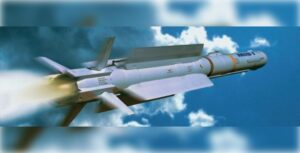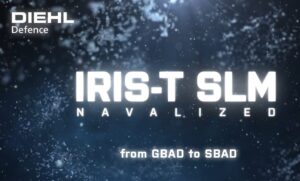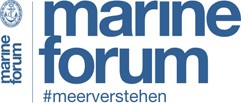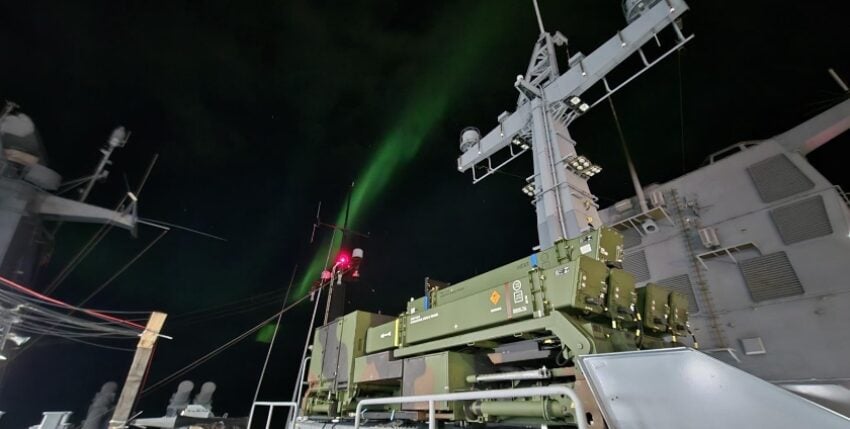Shooting exercise with IRIS-T SLM on the F125 off Andøya
Extensive missile firing phases are currently taking place at the Andøya test site in Norway. These include the firing of the frigate "Baden-Württemberg" with the IRIS-T SLM air defence system, which has already been completed. The F125 class frigate was specially retrofitted with a navalised version of the IRIS-T SLM system for this test.
However, retrofitting is always a complex project - and there are usually several options available. In the following, the complexity and alternatives will be presented, including the results of an integration study from the 2024 procurement environment. This article complements our initial report on the successful shooting:
Limited air defence of the F125 class
As "stabilisation frigates", the four Baden-Württemberg-class frigates (F125) only have very limited air defence capabilities. The main effector for close-range self-defence is the RIM-116 RAM system with 42 missiles, which covers effective ranges of around 9 km. More powerful medium or long-range air defence systems (e.g. ESSM or SM-2 on the F124 Saxony-class frigates) are missing on the F125. This gap was clearly noticeable in the course of the "Baden-Württemberg"'s circumnavigation in 2024: after the Indo-Pacific mission, she had to avoid the endangered region on the Red Sea and sail around the Cape of Good Hope instead. The test firings of the IRIS-T SLM off Andøya are aimed at increasing the "medium" air defence range of the F125 and closing its capability gap.

IRIS-T SLM: System features and integration on board
IRIS-T SLM (Surface-Launched Medium-range) is based on the German IRIS-T air-to-air missile and has been further developed into a ground-based air defence system. It offers an effective interception range of around 40 km at an altitude of up to 20 km. The missile has an infrared imaging seeker (IIR) with lock-on after launch capability, combined with GPS-supported inertial navigation and data link for midcourse guidance. A jettisonable nose cone reduces drag during climb, while thrust vector control and a proximity fuse increase the probability of interception against manoeuvring targets. The system is used to engage air targets such as aircraft, drones and supersonic sea targets, but is not suitable for ballistic missile defence. During the exercise in Andøya, IRIS-T SLM demonstrated a high hit rate at sea and achieved all test targets - an important step, as it was the first maritime deployment of an IRIS-T-based air defence system.
For the test, a demonstrator module was installed as a stand-alone solution on the C-deck of the "Baden-Württemberg", thus avoiding the need for a fixed vertical launch system. The module included the launch apparatus for the IRIS-T guided missiles and the necessary interface to the ship's sensors. Target data for the IRIS-T system was provided by the on-board radar (Hensoldt TRS-4D with fixed antennas). However, the demonstrator was not technically fully integrated into the frigate's command and weapon deployment system - there was only a "data transfer" from the ship's radar to the autonomous module, without a deeper connection to the Combat Management System (CMS).
The interim solution also entailed practical challenges: around 8 tonnes of steel had to be installed on C deck in order to attach the launch module, reinforce the deck and create a weight balance - with effects on the ship's centre of gravity and stability. For the installation, areas for the supply at sea (RAS) were also blocked and the short-wave antennas installed there were temporarily dismantled. Aspects that would have to be taken into account for permanent integration. Last but not least, the firing took place at night to ensure optimum conditions for the IR seeker.
These points make it clear that retrofitting the IRIS-T SLM is feasible, even if it requires some adjustments. The positive test results stand alongside the integration capability. They show that a multi-layered air defence concept can be implemented: IRIS-T SLM would extend the F125's defence range, which is currently limited to approx. 9 km, to a staggered zone of up to approx. 40 km, so that sea targets, drones or fighter aircraft could be intercepted far in front of the ship. The main gain lies in additional reaction time and several defence options before a threat carrier enters the close range.
Comparison of alternatives
Three alternative medium-range air defence systems and their characteristics are briefly compared below:
- Sea Ceptor (CAMM): The British Common Anti-air Modular Missile (CAMM) from MBDA, introduced in the Royal Navy as the Sea Ceptor, is a missile specially developed for use on ships. It utilises a active radar seeker headThis means that it can be used in all weather conditions and, depending on the target profile, achieves ranges of 25+ km with an interception altitude of up to 10 km. CAMM is fired vertically from compact canisters cold (Soft Vertical Launch), which means that no rocket exhaust gas is introduced into the ship and hangfire risks are minimised. This method simplifies shipbuilding installation, as neither exhaust shafts nor major structural modifications are required. According to the study, the F125 offers sufficient space for CAMM launch modules, possibly even container-based. Another advantage: the combination of TRS-4D radar, Atlas-ANCS guidance software and CAMM is already being implemented for Brazil's new Tamandaré frigates. The missile is slightly smaller than IRIS-T SLM, agile with 40g manoeuvrability and, like IRIS-T, can provide 360° all-round coverage with a high rate of fire. Sea Ceptor has been in service with the Royal Navy since 2018 (Type 23 frigates) and is also planned for new builds (Type 26, Type 31). In fact, a study carried out in 2024 concluded that CAMM is the fastest, most risk-minimised and most cost-effective option for medium air defence on F125s.
- ESSM (RIM-162 Evolved Sea Sparrow Missile): ESSM is a NATO-standard American-made anti-ship missile system that forms part of the inner belt of air defence on larger warships. The current Block 2 variant has an active X-band radar seeker (dual-mode, optionally semi-active) and achieves ranges of over 50 km at a speed of around Mach 4. In a comparison, ESSM Block 2 would be the clear leader in terms of performance (range, speed, warhead size). However, integration on F125 is associated with considerable hurdles: ESSM requires a Mk41 or Mk56 vertical launch system and - at least for Block 1 - illumination radars for target illumination, which the F125 does not yet have. In the study, a Mk41/ESSM retrofit was assessed as costly and risky, as both the installation of the heavy VLS modules and major software and sensor adaptations would be necessary. Even with Block 2 (active), integration into the combat system would remain complex.
- VL MICA: With VL MICA (Vertical Launch MICA), the French MBDA offers a ship-based air defence system that uses the MICA air-to-air missile. This is available in two versions - with active radar seeker (MICA RF) or imaging IR viewfinder (MICA IR). In terms of performance, VL MICA is considered a missile for short to medium range: the current missile reaches a maximum range of around 20 km, whereby the accuracy against agile targets at long range decreases. MICA was developed from the 1990s onwards and introduced worldwide on smaller warships as the main air defence weapon (including units of the French Navy and export corvettes). In principle, it would be possible to integrate VL MICA into the F125 - the system is compact and does not require a large VLS, as each missile has its own launch canister. However, there are currently no interfaces to German naval sensors or mission systems. Similar to ESSM, a considerable integration effort would be expected. However, with VL MICA NG (Next Generation), which is to increase the range to over 40 km by means of a dual-pulse rocket motor and offers modern seeker technology against stealth targets.
Overall, VL MICA is a technically interesting alternative, but it ranks behind CAMM and ESSM in the assessment and did not play a primary role in the 2024 study mentioned above.
For the sake of completeness, some information on the on-board RAM (Rolling Airframe Missile, Block 2): The RAM system is already present on the F125 and, in addition to the on-board artillery, provides the last layer of defence, namely at close range. The small roll-stabilised guided missile uses a Infrared and passive radar seeker (Block 2) for close-range self-defence against incoming missiles. However, with a range of around 9 km, RAM only covers the immediate vicinity of the ship. Although RAM is a very important CIWS (Close-In Weapon System) with its high reaction speed and hit density (salvo shot), it cannot replace medium-range defence.

Opportunities and limitations of IRIS-T SLM
In summary, the retrofitted IRIS-T SLM has given the F125 frigate a much-needed medium-range air defence capability and increased the ship's survivability: IRIS-T can engage incoming threats much earlier, while RAM stands ready as a last-ditch "emergency defence" against penetrating targets. However, IRIS-T SLM is no miracle cure: its performance comes with limitations, as the IR seeker is dependent on weather and visibility conditions and requires clear target signatures, while radar-based guided missiles can operate in all weather conditions. The effort required for full integration is also not insignificant until a navalised series solution has been developed - this requires more than a bucket of "false grey".
The aforementioned study assesses the options in a differentiated manner: Sea Ceptor is considered a lower-risk retrofit due to available soft launch modules and existing TRS-4D/ANCS interfaces. Mk 41/ESSM is categorised as structure- and time-intensive due to the necessary VLS installation. For IRIS-T SLM On the other hand, a launcher suitable for naval use and full CMS integration are cited as prerequisites for series production; a realistically achievable implementation path of several years from project approval. These estimates are in line with operational experience from international programmes (including the Royal Navy's Sea-Ceptor retrofit, which retrofitted the system to Type 23 frigates within four years).
Whether IRIS-T SLM is the optimal solution for the F125 or whether alternatives would be more suitable depends on numerous factors - from the exact deployment requirements and integration costs to industrial policy considerations. What is clear, however, is that closing the capability gap in the area of medium-range air defence is now being addressed.
Industrial policy meets operational reality
Andøya shows this, especially with regard to industrial policy goals: National solutions can be implemented in the short term. It is said that the Navy and the BAAINBw procurement office are already investigating how IRIS-T SLM could be implemented as a series solution.
In terms of a selection decision, the national industrial connection and its role in the European Sky Shield Initiative (ESSI) - an EU/NATO project initiated by Germany for the joint procurement of modern air defence systems - would speak in favour of IRIS-T. IRIS-T SLM is a central element for the medium range. The selection decision will therefore be a balancing act between short-term feasibility, long-term interoperability and industrial policy orientation.
hum











One Response
Thank you for the good overview! The IRIS-T SLM project has made one thing clear above all: if you dispense with 100% solutions and consistently prioritise speed over perfection, you can achieve a lot. I assume that the weaknesses of the IRIS-T seeker can be remedied if the missile is chosen as a weapon for the navy.
As soon as the SeaTiger is operational as a large sub-hunting helicopter and deployed on F-125s, the two main weaknesses of these ships, air defence and sub-hunting, will be largely eliminated in the sense of an 80% solution. This is really good news in these times.